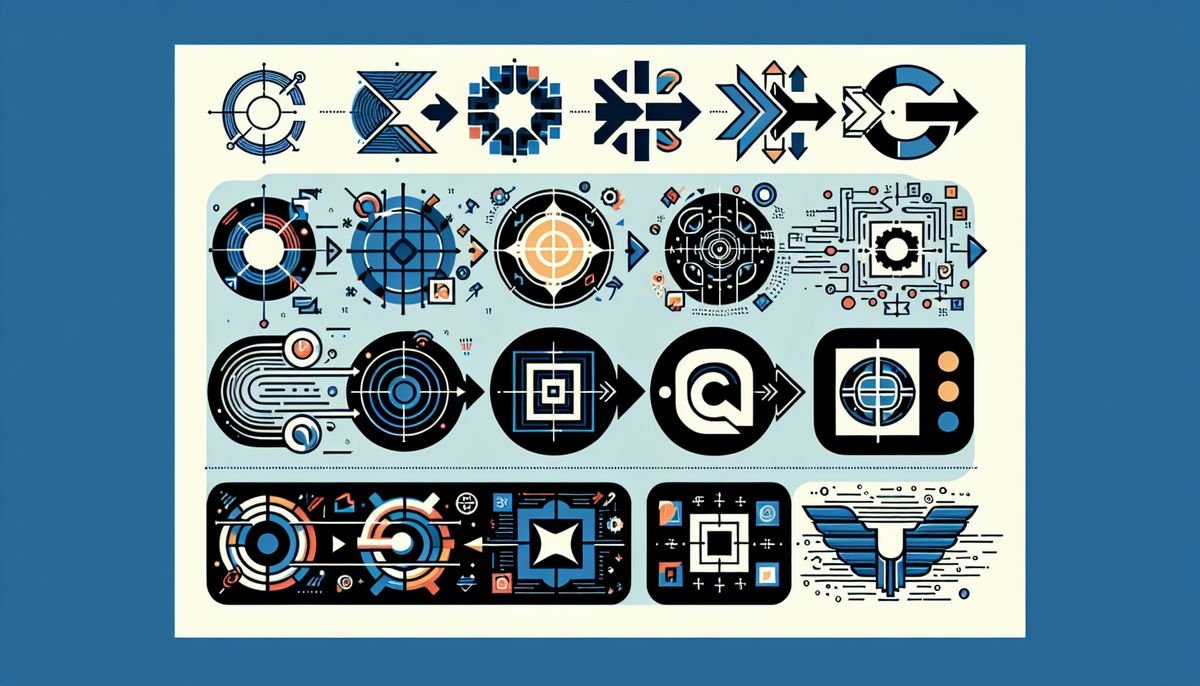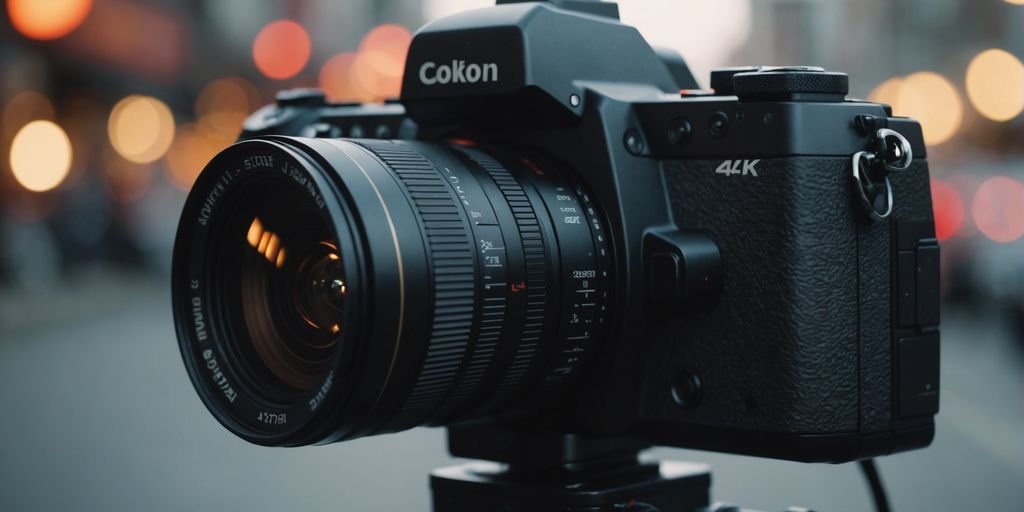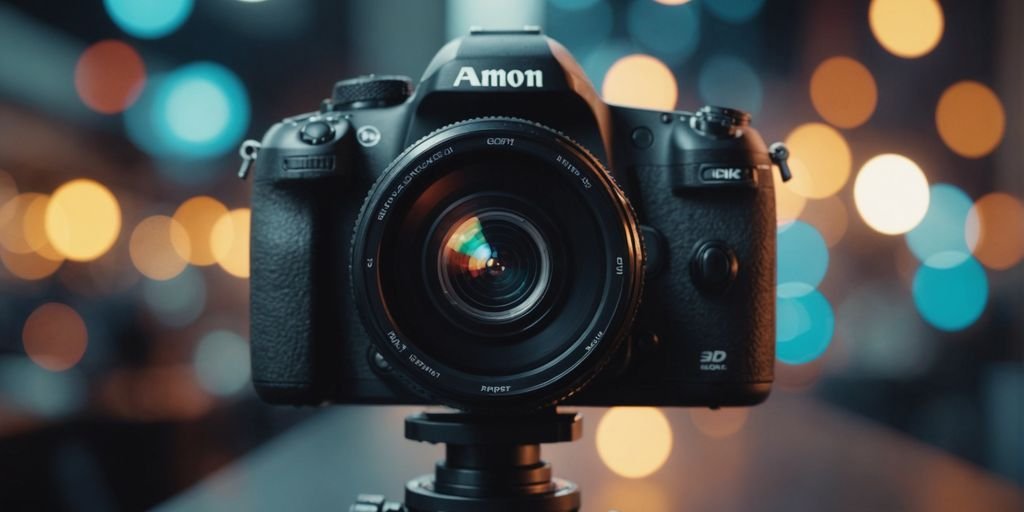In the digital age, where brands compete for attention in an ever-expanding online marketplace, the importance of a distinctive logo cannot be overstated. A logo serves as the visual cornerstone of a brand’s identity, encapsulating its essence and values in a single graphic representation. As such, the evolution of a logo over time is not just about keeping up with design trends; it’s about maintaining relevance and resonance with audiences. In this article, we’ll explore the transformative journey of logo design and how timeless design principles can ensure that your brandkit remains impactful and enduring.
Key Takeaways
- A logo is a critical component of brand identity, serving as a visual symbol that encapsulates a company’s essence and values.
- Redesigning a logo can revitalize a brand, but it requires a careful balance between modern trends and maintaining brand heritage.
- Timeless logo design is characterized by simplicity, versatility, and thoughtful use of color psychology.
- Analyzing successful logo transformations through case studies provides valuable insights into the impact of redesigns on brand perception.
- Integrating a well-designed logo into a cohesive brandkit is essential for building a strong visual identity and leveraging it for marketing success.
The Significance of Logo Design in Brand Identity
Understanding the Role of Logos
A logo is much more than just an image; it is a point of recognition for clients and an important foundation for the branding of your company. Logos are the face of a company, encapsulating its identity and core values in a single emblem. A well-crafted logo can convey the essence of a brand, making it memorable and distinguishing it from competitors.
A logo serves as a shorthand for the brand it represents, becoming a symbol of trust and quality in the eyes of consumers.
Effective logos are those that are easily recognizable and can be scaled to fit different contexts without losing clarity. Here are some key functions of a logo:
- Establishes brand identity
- Facilitates brand loyalty
- Enhances brand visibility
- Supports marketing and advertising efforts
In essence, a logo is a silent ambassador for your brand, working tirelessly across various platforms to communicate your brand’s message and values.
Creating a Memorable Brand Image
A memorable brand image is not just about aesthetics; it’s about creating a connection with your audience that stands the test of time. High-quality images and product photography can evoke emotions, create a sense of trust, and differentiate a brand from its competitors. By incorporating visually appealing and relevant visuals, businesses can establish a strong brand presence, captivate their target audience, and leave a lasting impression.
The essence of a memorable brand image lies in its ability to tell a story that resonates with consumers, reflecting their aspirations and values.
To achieve this, consider the following points:
- Utilize consistent branding elements across all platforms.
- Employ graphic elements like infographics to present complex information in an engaging way.
- Ensure that all visual elements are properly formatted and aligned to enhance readability and comprehension.
Remember, a brand that can maintain a consistent visual identity while evolving with modern design trends is more likely to foster long-term customer loyalty and recognition.
Balancing Timelessness and Trendiness
In the quest to create a logo that stands the test of time, brands must navigate the delicate balance between being timeless and staying on-trend. A professional logo is essential for brand success, as it conveys professionalism, consistency, recognition, credibility, and a competitive edge. It acts as a powerful communication tool that builds brand identity and trust.
To achieve this balance, consider the following points:
- Authenticity Over Disruption: While disruptive brands capture attention, authenticity should be your guiding principle. Align your logo with your brand’s core values and mission.
- Professional Guidance: Seek the expertise of design professionals who can blend current trends with classic design principles.
- Adapt to Changing Circumstances: Be open to evolving your logo to stay relevant with market shifts and customer expectations.
Embracing innovation in design choices, such as bold typography or abstract visuals, can position a brand as a trendsetter. However, it’s crucial to ensure these elements align with the brand’s overall identity and resonate with the target audience.
Ultimately, the goal is to craft a logo that feels fresh yet familiar, innovative yet identifiable. By incorporating modern design trends thoughtfully and maintaining the essence of the brand, companies can achieve a logo that both captivates and endures.
Revitalizing Your Brand with a Logo Redesign
Assessing the Need for a Logo Update
When considering a logo update, it’s crucial to evaluate whether your current logo accurately reflects your brand’s identity and values. A logo that doesn’t resonate with your target audience or fails to stand out in a crowded market may signal the need for a redesign.
To assess the need for a logo update, consider the following points:
- Relevance: Does your logo still align with your brand’s core message and target demographic?
- Recognition: Is your logo easily identifiable and memorable to your audience?
- Competitiveness: How does your logo compare to competitors’ in terms of design and impact?
- Versatility: Can your logo be effectively used across various platforms and mediums?
If your logo falls short in any of these areas, it may be time to consider a refresh. A logo redesign can be a powerful way to reinvigorate your brand and maintain relevance in a rapidly evolving market.
Remember, a logo update is not just about changing visuals; it’s about strengthening the connection with your audience and ensuring that your brand’s essence is communicated effectively.
Incorporating Modern Design Trends
In the ever-evolving world of design, staying current with modern trends is essential for a logo that resonates with today’s audience. Incorporating modern design trends can breathe new life into a brand, making it relevant and appealing to a contemporary market. However, it’s crucial to filter trends through the lens of your brand’s identity to ensure that any updates enhance rather than dilute your brand’s message.
Modern design trends to consider:
- Minimalism: Stripping back to basics for clarity and impact.
- Bold Geometry: Using strong shapes to convey stability and precision.
- Vibrant Color Palettes: Embracing color psychology to evoke emotions.
- Responsive Design: Ensuring the logo adapts well across different platforms.
When updating your logo, think of it as a strategic brand evolution rather than a complete overhaul. The goal is to refresh the image while maintaining a connection to the brand’s heritage.
It’s important to strike a balance between innovation and brand consistency. A logo redesign should not be a radical departure but a thoughtful progression that aligns with the company’s vision and values. By carefully selecting elements from modern design trends, you can create a logo that stands the test of time while staying ahead of the curve.
Maintaining Brand Heritage in a New Design
When undertaking a logo redesign, it’s crucial to preserve the essence of your brand’s heritage. Maintaining a connection to your brand’s history can foster customer loyalty and ensure a seamless transition. To achieve this, consider the following steps:
- Identify the core elements that represent your brand’s legacy.
- Analyze customer perception and attachment to the current logo.
- Integrate timeless features with a modern twist to honor the past while looking forward.
However, don’t forget to keep your core values and mission at the forefront of any innovation. Changes should feel like a natural evolution of your brand, not a departure from what your customers have come to know and trust. Regularly review your brand strategy to ensure it aligns with current market dynamics and the evolving needs of your customers.
Embracing AI-powered tools like LogoAI and DIDIMO can revolutionize creativity and design in branding, enhancing efficiency and possibilities in various industries.
Principles of Timeless Logo Design
Simplicity and Clarity
The essence of a timeless logo lies in its simplicity and clarity. A simple design ensures that the logo is easily recognizable and memorable, which is crucial for building a strong brand identity. Complex logos often fail to communicate effectively and can become outdated quickly. By focusing on a minimalist approach, brands can create logos that transcend trends and remain relevant over time.
Italics are often used to emphasize the importance of simplicity in design. A logo should not only be distinctive but also versatile, able to adapt to various media without losing its essence. Here are some key considerations for achieving simplicity and clarity in logo design:
- Use clean, uncluttered lines and shapes.
- Limit the color palette to a few complementary colors.
- Choose typography that is legible and reflects the brand’s personality.
- Avoid unnecessary embellishments that can detract from the core message.
In the pursuit of simplicity, it’s essential to remember that a logo must still convey the brand’s values and resonate with the target audience. Striking the right balance between simplicity and meaningful representation is the hallmark of a successful logo design.
Versatility Across Various Media
A logo’s ability to adapt to various media is crucial for brand consistency. Versatility ensures that the logo maintains its integrity whether it’s displayed on a tiny mobile screen, a giant billboard, or embroidered on company apparel. This adaptability is not just about size, but also about context; a versatile logo works equally well in black and white as it does in color, and remains recognizable even when printed in different materials or textures.
The key to versatility is designing a logo that is not overly complex and can be easily adjusted for different formats without losing its essence.
To achieve this, consider the following points:
- Ensure scalability without loss of detail.
- Maintain legibility across all sizes and mediums.
- Design with various applications in mind, from digital to print.
- Test the logo in multiple contexts to guarantee its effectiveness.
By prioritizing versatility, you create a logo that can grow and evolve with your brand, making it a timeless asset in your brandkit.
Color Psychology in Logo Creation
The strategic use of color in logo design is not just about aesthetics; it’s about tapping into the subconscious of the target audience. Color psychology plays a pivotal role in branding, as different hues can evoke specific emotions and associations. For instance, blue often conveys trust and dependability, while red can trigger excitement and urgency.
When selecting colors for a logo, it’s essential to consider the brand’s message and the cultural context of the target market. Here’s a simple list of common color associations in Western cultures:
- Blue: Trust, Security, Stability
- Red: Excitement, Energy, Passion
- Green: Growth, Health, Renewal
- Yellow: Optimism, Clarity, Warmth
- Black: Sophistication, Luxury, Elegance
- White: Purity, Simplicity, Cleanliness
The right color choice can make your logo instantly recognizable and can significantly impact how your brand is perceived. It’s a delicate balance between being bold and unique while ensuring the colors align with the brand’s core values and message.
Ultimately, the goal is to create a logo that resonates on an emotional level with consumers, fostering a strong and lasting connection with the brand. This is why color selection should never be an afterthought in the logo design process.
Case Studies: Successful Logo Transformations
Analyzing Iconic Logo Evolutions
The evolution of a logo is a testament to a brand’s journey, reflecting its history, values, and aspirations. Iconic logo transformations often serve as benchmarks in design, showcasing how brands adapt to changing times while maintaining their core identity. Consider Apple’s transition from the rainbow-striped apple to the sleek, monochrome logo, or how Pepsi’s globe has evolved over the decades. These changes are not merely aesthetic but strategic moves that resonate with contemporary audiences.
Apple’s Logo Evolution
- 1976: The Isaac Newton-inspired apple
- 1977: The rainbow-striped apple
- 1998: The monochrome apple
Pepsi’s Logo Evolution
- 1940s: The red script logo
- 1950s: The bottle cap design
- 2000s: The three-dimensional globe
Analyzing these evolutions, we can identify patterns and strategies that lead to successful redesigns. A common thread is the simplification of design elements, making logos more versatile and recognizable. Another observation is the strategic use of color to convey brand personality and values. For instance, the transition to monochrome in Apple’s logo signifies sophistication and modernity, while Pepsi’s varied use of red, white, and blue reflects its American heritage and youthful energy.
The key to a successful logo evolution lies in balancing heritage with innovation, ensuring that the new design pays homage to the brand’s legacy while signaling a fresh direction.
Impact of Redesign on Brand Perception
The impact of a logo redesign on brand perception cannot be overstated. A well-executed redesign can amplify brand credibility and foster a deeper connection with the target audience. For instance, Brand W’s visual overhaul not only enhanced recognition but also reinforced consumer trust.
The right visual design can elevate a brand’s perceived value and set it apart from competitors.
However, not all redesigns lead to positive outcomes. It’s essential to maintain a balance between innovation and the brand’s heritage. Brand V’s attempt to differentiate through innovative design serves as a testament to the delicate nature of logo evolution. Here are some qualitative points to consider when assessing the impact of a logo redesign on brand perception:
- The clarity of the brand’s message post-redesign
- The emotional response elicited from the existing customer base
- The attraction of new demographics
- The consistency of the new design with the brand’s overall visual identity
Incorporating modern design trends should be done thoughtfully, ensuring that the essence of the brand is not lost in the process. The use of AI tools can revolutionize content creation and customer service, enhancing the brand’s image in the digital realm.
Lessons Learned from Logo Redesign Failures
The path to a successful logo redesign is fraught with potential pitfalls. Learning from past failures is crucial to avoid repeating the same mistakes. A common thread among unsuccessful redesigns is the neglect of a brand’s core identity, leading to a disconnect with the audience. To mitigate this, consider the following points:
- Respect the legacy: Understand the elements that resonate with your audience and strive to preserve them.
- Engage stakeholders: Involve customers, employees, and other stakeholders in the redesign process to gather valuable insights.
- Test extensively: Before finalizing the design, test it across various demographics and platforms to ensure it communicates the intended message.
By adhering to these principles, brands can navigate the delicate balance between innovation and tradition, crafting a logo that is both fresh and familiar.
Ultimately, a logo must serve its fundamental purpose of embodying the brand’s essence and values. A redesign that prioritizes style over substance, or trendiness over relevance, is likely to fall short. It’s essential to approach the redesign with a strategic mindset, focusing on long-term brand goals rather than short-lived visual appeal.
Integrating Your Logo into a Cohesive Brandkit
Building a Visual Identity Around Your Logo
A logo is more than just a graphic; it’s the cornerstone of a brand’s visual identity. Creating a cohesive visual identity around your logo is essential for brand recognition and consistency across all platforms. This involves integrating your logo with other key visual elements such as color palettes, typography, and imagery to form a unified brand language.
Visual design elements for brand identity include:
- Color palettes that capture attention and enhance user experience
- Typography that communicates brand messaging effectively
- Imagery that resonates with consumers and fosters brand loyalty
- Layout that ensures readability and a clear visual hierarchy
By carefully crafting these elements, businesses can establish a strong brand identity that not only stands out in the competitive landscape but also builds consumer trust and engagement.
It’s important to maintain a balance between innovative design choices and the heritage of the brand. This balance ensures that while the brand evolves, it remains true to its core values and message. A well-designed brandkit that revolves around your logo can elevate the perceived value of your brand and differentiate it from competitors.
Ensuring Consistency Across Brand Materials
Maintaining a consistent visual identity across all brand materials is not just about aesthetics; it’s about reinforcing brand recognition and trust. Consistency is key to ensuring that customers can instantly connect your marketing collateral with your brand, whether they encounter it online, in print, or in person.
To achieve this, brands must adhere to a set of guidelines that dictate the use of color palettes, typography, and imagery. For example, a specific color palette should be used uniformly across digital and physical platforms to evoke a distinct brand image. Typography, while often overlooked, plays a crucial role in setting the tone and personality of the brand. High-quality images and product photography should not only be visually appealing but also communicate the brand’s essence and evoke the desired emotions.
By leveraging tools for social media content creation such as real-time collaboration, version control, feedback, and approval processes, brands can enhance teamwork, efficiency, and content quality for creators.
Here’s a simple checklist to ensure consistency across brand materials:
- Adhere to brand guidelines for color palettes and typography
- Use high-quality, consistent imagery and product photography
- Implement real-time collaboration and version control for content creation
- Establish a feedback and approval process to maintain quality
- Regularly review and update brand materials to align with the evolving brand identity
Leveraging Your Logo for Marketing Success
Once your logo is finely crafted, it becomes a pivotal tool in your marketing arsenal. Use your logo consistently across all marketing materials to build recognition and trust with your audience. This includes digital platforms, print materials, and even merchandise. Here are some key strategies to effectively leverage your logo:
- Consistency is key: Ensure your logo appears the same across various channels.
- Storytelling: Incorporate your logo into the narrative of your brand’s story.
- Promotional items: Use your logo on merchandise to increase brand visibility.
By integrating your logo into every aspect of your marketing, you create a cohesive brand experience that resonates with customers and stands out in a crowded marketplace.
Remember, your logo is more than just an image; it’s a representation of your brand’s identity. As such, it should be integrated thoughtfully into your marketing strategy to maximize its impact. Whether you’re launching a new campaign or reinforcing your presence in the market, your logo is your silent ambassador, speaking volumes without saying a word.
Creating a seamless brand identity is crucial for your business, and integrating your logo into a cohesive brandkit is the first step. Visit our website to explore expert tips and tools that will help you build a strong, recognizable brand. Don’t let your brand get lost in the noise—make it stand out with a professional brandkit tailored to your vision.
Conclusion
In the dynamic world of branding, the evolution of logos and brand kits is a testament to the power of timeless design principles. As we’ve explored in this article, the journey from initial concept to a polished visual identity involves a meticulous blend of creativity, strategy, and an understanding of the brand’s core values. Whether it’s through the careful selection of color palettes, the strategic use of typography, or the innovative application of visual elements across various platforms, the goal remains the same: to create a brand identity that resonates with consumers and stands the test of time. For businesses and individuals alike, investing in a well-crafted logo and cohesive brand kit is not just about aesthetic appeal; it’s about building a foundation for brand recognition, customer loyalty, and long-term success. As trends come and go, those who embrace the principles of timeless design will find their brand identity remains relevant, compelling, and distinct in an ever-evolving marketplace.
Frequently Asked Questions
Why is logo design important for brand identity?
Logo design is crucial for brand identity as it acts as the visual cornerstone of a brand. A well-designed logo is instantly recognizable, reflects the brand’s values and personality, and establishes a memorable image in the minds of consumers.
How often should a company consider redesigning its logo?
A company should consider redesigning its logo when it no longer reflects the brand’s current values, offerings, or target market. This can be due to significant changes in the company’s direction, market evolution, or simply to stay current with design trends.
What are the key principles of timeless logo design?
The key principles of timeless logo design include simplicity and clarity, versatility across various media, and the strategic use of color psychology to evoke the right emotions and brand perception.
Can a logo redesign negatively impact brand perception?
Yes, a logo redesign can negatively impact brand perception if it strays too far from the brand’s heritage, confuses customers, or fails to communicate the intended message. It’s important to maintain a balance between innovation and brand recognition.
How do you ensure a new logo design integrates well with an existing brandkit?
To ensure a new logo integrates well with an existing brandkit, it should align with the brand’s visual identity, including color palette, typography, and imagery. Consistency across all brand materials is key to a cohesive brand presence.
What role does a logo play in a company’s overall marketing strategy?
A logo plays a pivotal role in a company’s marketing strategy as it is often the first point of interaction with the brand. It helps in building brand recognition, differentiating from competitors, and is used across all marketing materials to provide visual consistency.



